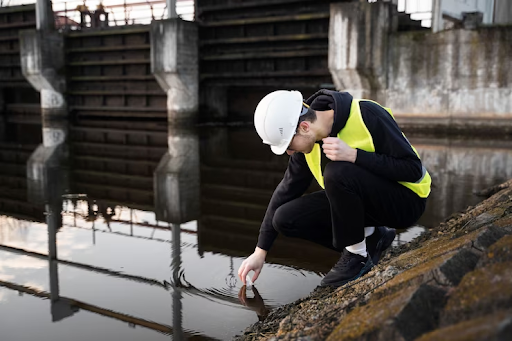
Maintaining clean and healthy environments is a top priority in the United Kingdom, and an integral part of achieving this goal is the effective treatment of sewage. Sewage treatment plant plays a crucial role in processing and purifying wastewater, ensuring it is safe to be discharged back into natural water sources. With the advancement of technology and environmental awareness, various types of sewage treatment plants have been developed and implemented across the UK. In this blog, we will take a comprehensive look at the different types of sewage treatment plants employed in the UK.
Conventional Activated Sludge Plants
One of the most commonly used types of sewage treatment plants in the UK is the Conventional Activated Sludge Plant. This system utilises a combination of aerobic bacteria and air to break down organic matter in wastewater. The treatment process involves the separation of solids and liquids, followed by aeration to encourage bacterial growth and decomposition. The treated water is then discharged, meeting strict environmental standards. This type of plant is known for its effectiveness in removing organic pollutants and pathogens from wastewater.
Sequencing Batch Reactor Plants
Sequencing Batch Reactor (SBR) Plants have gained popularity due to their efficiency and flexibility in wastewater treatment. These plants employ a batch process, where sewage undergoes treatment in multiple stages. Each stage includes biological treatment, settling, and decanting, ensuring thorough purification. SBR plants offer advantages such as reduced energy consumption, compact design, and the ability to adapt to varying wastewater volumes and qualities. They are often preferred for smaller communities or areas with space constraints.
Extended Aeration Plants
These plants are another type of sewage treatment system widely used in the UK, offering effective drainage solutions. They rely on the extended aeration process, where wastewater is aerated more extended, allowing microorganisms to break down organic matter effectively. This process occurs in a tank, and the treated water is then separated from the solids before discharge. Extended Aeration Plants are known for their energy efficiency, low maintenance requirements, and odour control features. They are particularly suitable for smaller communities and can produce high-quality effluent.
Rotating Biological Contactors
Rotating Biological Contactors (RBCs) are a unique type of sewage treatment plant that utilises a series of rotating discs or cylinders to support biofilm growth. The biofilm contains microorganisms that degrade pollutants in the wastewater. As the discs or cylinders rotate, they come into contact with the wastewater, promoting efficient treatment. RBCs are known for their simplicity, compact design, and robustness. They are often used in rural areas or where intermittent loads are expected, as they can handle variations in flow and load effectively.
Membrane Bioreactor (MBR) Plants
Membrane Bioreactor (MBR) Plants combine the principles of biological treatment and membrane filtration to achieve advanced wastewater purification. These plants utilise a membrane barrier to separate solids, bacteria, and other contaminants from the treated water. MBR plants offer several advantages, including a smaller footprint, improved effluent quality, and enhanced resistance to fluctuations in influent characteristics. They are commonly used in urban areas with limited space and strict water quality regulations.
Constructed Wetlands
These systems mimic the purification processes that occur in natural wetland ecosystems. Wastewater is directed through engineered wetland cells filled with plants, gravel, and sand, which help remove pollutants through biological, physical, and chemical processes. Constructed wetlands are known for their effectiveness in nutrient removal, including nitrogen and phosphorus. They provide additional benefits such as wildlife habitat creation, aesthetic value, and potential for water reuse. These eco-friendly treatment systems are often used in rural and decentralised settings.
The Bottom Line
By utilising the sewage treatment plant system, the UK prioritises sustainable water management, protecting the environment and public health. The ongoing development and implementation of these treatment plants contribute to cleaner water sources and a greener future for the nation.